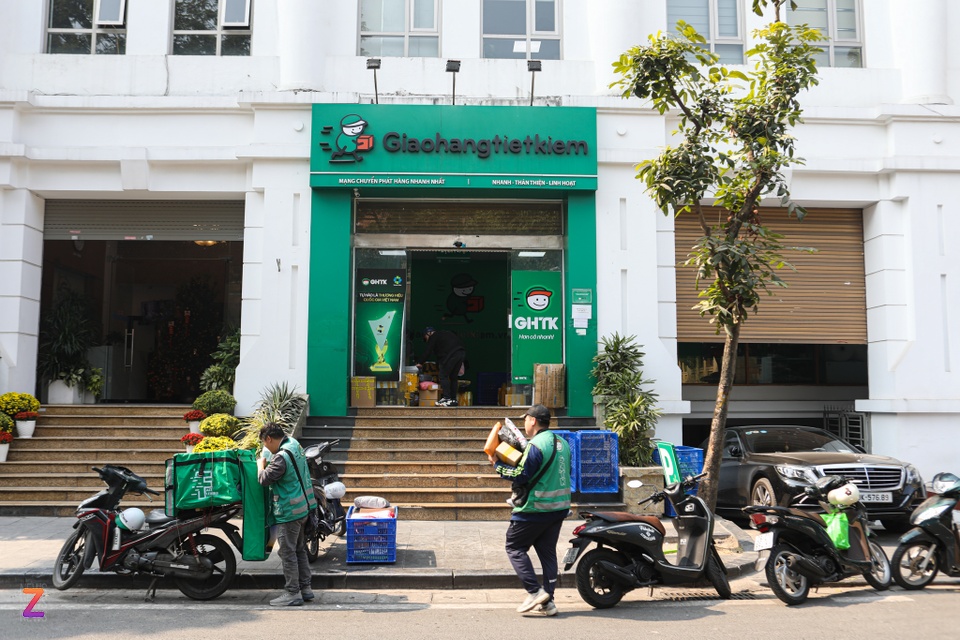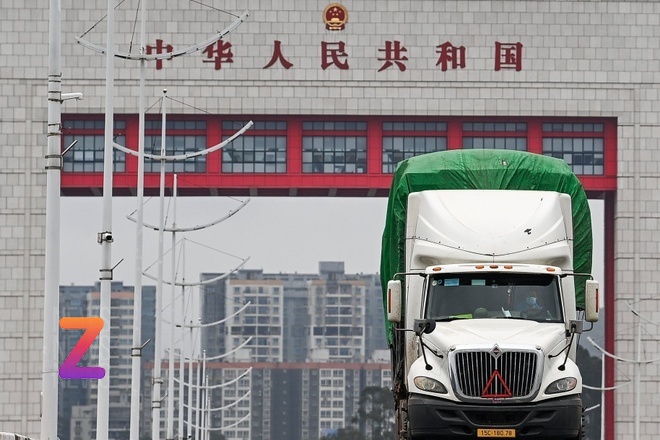With double-digit growth, a market worth tens of billions of USD, and mounting pressure from e-commerce, Vietnam’s logistics industry has entered a “high-speed highway” of fierce competition.

Viettel Post, Giao Hang Tiet Kiem, VNPost, J&T Express, and Giao Hang Nhanh currently account for over 63% of the domestic express delivery market. Photo: Viet Ha.
Vietnam’s logistics market is growing at the fastest rate in the region, creating unprecedented pressure in the race between domestic and foreign enterprises. According to the Ministry of Industry and Trade, Vietnam’s logistics market is currently valued at around USD 45–50 billion, with an average annual growth rate of 12–14%. In particular, the courier, express, and parcel (CEP) segment reached VND 71.14 trillion (approximately USD 3 billion) in revenue in 2024, growing nearly 20% annually between 2017–2024.
Racing for Market Share
The biggest growth driver comes from e-commerce, whose revenue surged from USD 13.7 billion in 2021 to USD 20.5 billion in 2023, and is projected to hit USD 35.8 billion by 2028. Changing shopping habits are also shifting service standards, with customers expecting same-day or next-day delivery, expanded evening and weekend delivery windows. This forces service providers to “accelerate” both processing speed and service quality.
Domestic players such as Viettel Post, Giao Hang Tiet Kiem, VNPost, J&T Express (foreign-invested but localized operations), and Giao Hang Nhanh now hold over 63% of the domestic CEP market. These companies have the advantage of networks covering 34 provinces, along with deep knowledge of local markets and consumer habits.
Viettel Post recently invested in a bonded warehouse in Lang Son, reducing customs clearance time for agricultural products from 3–4 days to just 24 hours. J&T Express has standardized e-logistics with unified tracking codes, barcodes, synchronized multi-platform data, and AI-powered real-time analytics to detect issues early.
“Information security is the core foundation for developing innovative technology solutions to serve customers comprehensively and sustainably,” affirmed Phan Binh, Brand Director of J&T Express Vietnam.
Meanwhile, global giants like DHL, FedEx, and UPS focus on cross-border logistics and value-added services. These corporations have the advantage of global networks, internationally standardized processes, and the ability to manage complex supply chains. The key difference: domestic firms are racing to expand and optimize speed in the local market, while foreign firms leverage expertise and service standards to capture the international segment—where margins are higher but compliance requirements are stricter.
Segmentation Strategy: Sprinting in Separate Lanes
Thin margins (only 2–3% for CEP) mean companies must carefully calculate their strategies. Direct price competition only intensifies the race, so many shift towards niche segments with high infrastructure and technology barriers.
The heavy and bulky goods segment is a clear example. Although it accounts for less than 1% of orders, it consumes up to 8% of logistics costs. Giao Hang Nang (Heavy Delivery), a Giao Hang Nhanh brand, has invested in more than 1,500 trucks, 52 logistics centers, 1,000 post offices, and 20,000 interprovincial routes. The company’s entire operation integrates AI for data analysis, planning, and route optimization to efficiently handle orders of varying weights and dimensions.
“Heavy goods require specialized trucks, large storage yards, and automation. Without relying on technology, companies cannot optimize operations,” noted Luong Duy Hoai, CEO of Giao Hang Nang.
In the fast delivery segment, Viettel Post has developed Viettel Cargo for ultra-heavy goods and a network of border warehouses. Giao Hang Tiet Kiem is piloting “mini hubs” in suburban areas to shorten last-mile delivery. Best Express is offering heavy goods delivery through a franchise model, expanding coverage at lower costs. VNPost is heavily investing in automated sorting and partnering with international e-commerce platforms to boost cross-border orders.

Many Vietnamese logistics firms are developing warehouses near the Chinese border to shorten transportation time, especially for ultra-heavy goods. Photo: Viet Linh.
Foreign enterprises are also entering niche markets. DHL and FedEx are investing in cold-chain logistics targeting the food and pharmaceutical industries. Kuehne+Nagel is expanding 3PL/4PL services for manufacturing clients, integrating transportation, warehousing, and supply chain management.
The difference lies in their approach: global corporations leverage worldwide networks to quickly connect transport corridors, while Vietnamese firms rely on local expertise to handle the last mile more effectively.
Cross-border investment is also heating up. Giao Hang Nang plans to expand infrastructure at the Vietnam–China border, Cai Mep port, and warehouses in Binh Duong and Ho Chi Minh City to capture the flow of goods shifting from China. This is a strategic move to secure an advantage at key “choke points” of import-export flows. International players with global experience are also seeking entry, creating head-to-head competition right at trade gateways.
A Race Without a Finish Line
Growth in the logistics industry does not guarantee a “safe zone” for all. Experts predict that by 2030, the market will undergo strong segmentation. According to IMARC Group, Vietnam’s logistics market could reach USD 65.3 billion, growing at 6.5% annually between 2025–2030. The fastest-growing segments include cold-chain logistics, ultra-fast delivery, heavy goods, and 3PL/4PL services.
For domestic firms, the challenge is to upgrade technology while controlling costs. Without maintaining low return rates, optimizing delivery routes, and improving labor productivity, they risk losing market share to financially and technologically stronger rivals. For international firms, the barriers are understanding the local market, adapting quickly to consumer habits, and managing domestic operating costs.
New competitive drivers are emerging. Companies are racing to fully digitize operations, apply AI and IoT to optimize workflows, invest in green logistics to meet rising environmental standards, and standardize processes and data to scale services. These factors will determine who retains a long-term advantage in this endless race.
According to Melissa Cyrill, an expert at Dezan Shira & Associates, Vietnam is at a crucial crossroads in the global logistics network thanks to its geographic location, manufacturing capacity, and the supply chain shift. The sector contributes about 4.5% of GDP and, in an optimistic scenario, could reach USD 71.88 billion by 2030 with a CAGR of around 6.75% per year.
“This is not just a race for speed—it’s a test of the ability to sustain long-term advantages through sustainable investment and continuous innovation,” she emphasized.
Vietnam’s logistics race, therefore, is not about who can deliver faster, but about who dares to invest longer, optimize deeper, and act more decisively amid market volatility.











